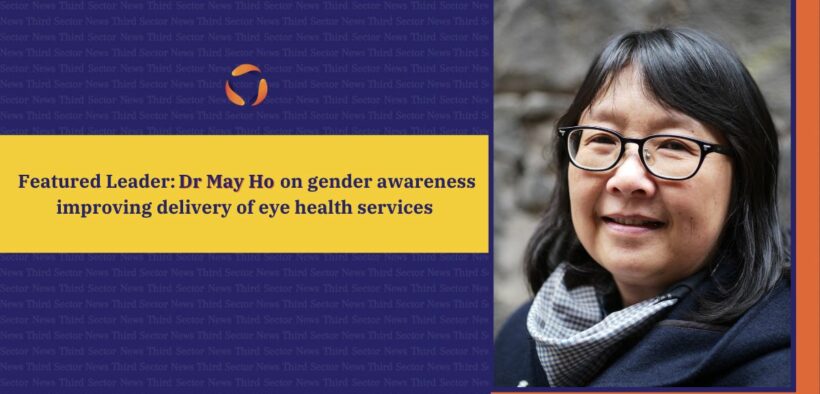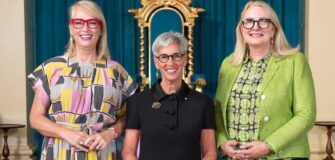The delivery of eye care does not follow a single strategy. According to The Fred Hollows Foundations’ guide to gender-responsive eye health programming, women are significantly more likely to be visually impaired but are less likely to seek treatment from eye health services.
The foundation approaches eye health services for women and girls with a gender equity lens, an approach where they recognise that men and women have different needs, preferences and interests and that achieving equality of results may call for treating men and women differently.
Third Sector News interviewed Dr May Ho, Optometry and Primary Care Adviser at The Fred Hollows Foundation with over 30 years of public health and international eye health experience.
1. As an advisor for optometry and primary care, what are your thoughts on the use of technology in the diagnosis and treatment of eye diseases?
Technology certainly has a place in the screening and increasing diagnosis of certain eye diseases. During the pandemic, the use of technology accelerated in these two areas due to the inability of healthcare professionals to travel readily to remote locations.
Where human resources are not available to screen for eye diseases, for example, diabetic retinopathy (retinal changes due to diabetes, sight-threatening in advanced disease) can be screened using retinal cameras operated by trained operators. These images can then be analysed using AI systems or read by an eye care professional like an optometrist or ophthalmologist.
There are AI systems now that can detect diabetic retinopathy quite accurately to be referred to eye care professionals for further assessment and treatment. This potentially means reaching people who live in remote areas where human resources for eye care are not available and freeing up the time of eye care professionals to provide treatment and follow-up.
However, technology is not the panacea for all eye problems. Uncorrected refractive error (needing spectacles or correction to see) is one where technology is not a substitute for accurate diagnosis (measurement) due to human factors. In time, these barriers may be addressed for certain sectors of the population.
I recently attended the Asia Pacific Association of Ophthalmology Conference where there were daily sessions on technology and eye care, this field is attracting a lot of interest with many innovations emerging. Watch this space!
2. Throughout your career, what are a few notable changes made to cater to women’s and girls’ eye health?
I have worked in public health and development throughout my career. Over time, gender awareness is improving with many organisations and service providers collecting gender-disaggregated data to better understand who is accessing their services.
Organisations like The Fred Hollows Foundation, where I work, actively implement programs that target women and girls both in the delivery of eye care services and in providing training opportunities. For example, we have an ophthalmology fellowship program for women ophthalmologists from Low and Middle-Income Countries.
We also analyse the gender and health inequity data in the countries where we work. If women and girls bear the bigger burden of visual impairment and blindness, then women and girls need to be receiving more services than men to increase equity. Despite all the work that has been done there are still more women and girls (55%) with vision loss than men and boys. So there is still a lot that remains to be done.
3. The Fred Hollows Foundation provides services worldwide, what are some of the challenges you have faced when delivering these services?
The Foundation works with in-country governments and partners to provide eye care services. Amongst the challenges faced are the low priority of eye care, availability of human resources and infrastructure to deliver care, poor quality of services, low awareness of eye care (both the community and government), and sustainability.
We address these with advocacy, training and health promotion strategies. I have been involved in the training of eye care personnel to deliver both refraction and primary eye care services.
It was great for me to return to the hospital where I trained refraction trainers in Vietnam back in 2008 to meet up with the trainers (all women) who are still supporting the training. The hospital continues to run refraction training courses to this day.
Related: Fred Hollows is working to end gender disparity in eye health
4. Looking ahead, what are some of the key priorities and initiatives that The Fred Hollows Foundation is focusing on to improve eye health outcomes for women and girls?
In almost every place The Fred Hollows Foundation works, women are overrepresented in rates of avoidable blindness and vision impairment. Because women make up 55 per cent of the world’s blind population, training women to become eye health workers and educators is a core part of what we do.
In 2022, 60% of the teachers The Foundation trained were women. Additionally, 75% of surgeries to treat trachoma were on women and girls.
In 2018, The Foundation launched the She Sees campaign wants to narrow the gap and help ensure more women get access to eye health services. Through She Sees, The Fred Hollows Foundation is committed to placing women and girls firmly at the centre of our programming, service delivery, partnerships, and global advocacy work.
Fewer blind women in the world is a win not just for those women, but it’s a win for all of us and is a major step in the fight against avoidable blindness.
5. Is there anything you would like to highlight?
The number of women in optometry and ophthalmology is increasing, perhaps more so in the former. It is great to see so many women in eye care – this will break down access barriers in some countries and situations.
Menchie Khairuddin is a writer Deputy Content Manager at Akolade and content producer for Third Sector News. She is passionate about social affairs specifically in mixed, multicultural heritage and not-for-profit organisations.


































































































































































